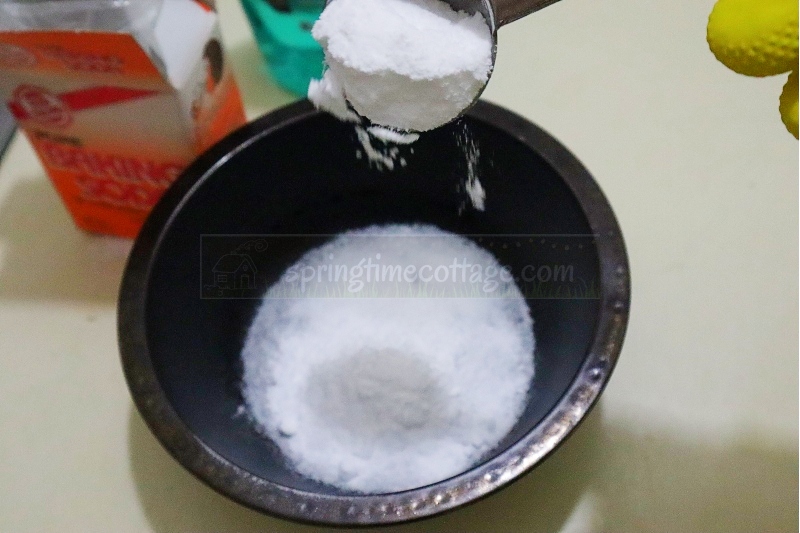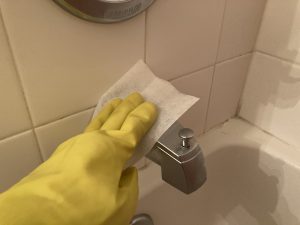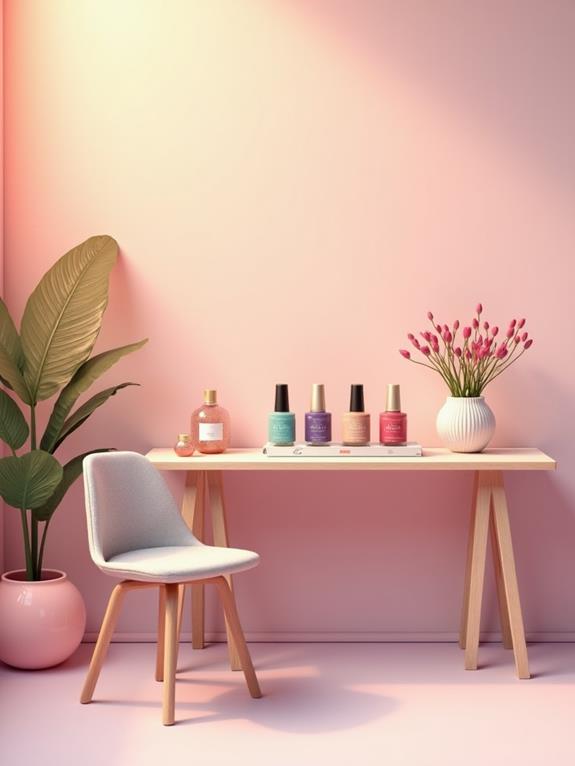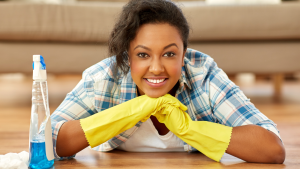Cleaning the home is a must, especially for all you homemakers out there. However, while some people enjoy cleaning and take it on with a joyous attitude, others like myself do not really like to clean – even though I must admit that I love to see a clean space, and I am miserable when my surrounding is untidy or has even a little dirt here or there.
I just never liked to be the one to clean up the mess. When I realized that if I am not going to hire a cleaner, I will have to get some cleaning done; I started to seek ways to make cleaning easier.
I have both searched Pinterest and tried lots of cleaning hacks and I must admit that they mostly promote healthy ways to clean the house as well as alternatives for harsh chemicals when cleaning.
I do like and have been using those great green cleaning methods but I thought of breaking the rules just a bit to see what results I would get. Not to worry, in this set of cleaning tips and hacks, I will also have green cleaning tips included.
Here are 17 of the cleaning hacks I came up with as a result of being a lazy cleaner.
Use baking soda paste

Make a paste with baking soda and hydrogen peroxide. Apply it to the grout with a toothbrush and leave it to soak for 30 minutes. Use a few drops of dish soap dissolved in about a quarter cup of water with the toothbrush or other brush that you may find more suitable. Scrub it away and rinse.
Use a toothpaste solution
Use one teaspoon of toothpaste mixed with one teaspoon of hydrogen peroxide and one teaspoon of baking soda and add one small squirt of dish soap. Make a paste and apply it to the grout and let it soak for thirty minutes and then scrub it away. All of those ingredients are good for killing all sorts of germs and microbes. When combined in that way they will be much more effective.
Use Clorox Bleach Gel
Use Clorox bleach gel to paste on the grout and let it sit for one to two hours and then scrub it off with a brush and water.

Ensure you use gloves and a protective face mask to prevent this from touching your skin or getting into your eyes.

Remove dirty grime and grease from the dishcloth by boiling them in a solution of one-quart water and 2 cups of white vinegar for five minutes. Remove them from the hot water and place them in a warm water solution of one-quart water and a quarter of a cup of borax and one tablespoon of dish soap. Let them soak for thirty minutes and then rinse them out. Now you will have fresh dish towels.

Use WD-40 to remove permanent markers from leather surfaces. Use Windex to remove pen ink from clothes, and use rubbing alcohol to remove both inks from either of those surfaces.

Use one-quart warm water, 2 cups of white vinegar, one cup of lime juice, and one cup of grated soap. Combine all ingredients together and use them to clean tile floor surfaces, countertops, sinks, tubs, and even the toilet bowl.
Apply a little dish soap to the grease stain and use a damped cloth to rub out the soap. Let it dry and the stain will be gone. Or you could rub a piece of chalk onto the grease stain until the area looks really powdery. Leave it for a while and then dust it away. The chalk will absorb the grease stain for you.
Have you ever tried to remove sticky residues and it seems like a hard task? Especially if you traveled with some blended oats or fruit smoothies in your chosen shuttable bottle. Here is a simple solution. Pour a little raw rice into the bottle, put in a little soapy water, and shake. Empty and rinse away. The bottle is now clean.

Clean and remove the scent and bacteria from your cleaning sponge by sprinkling some baking soda onto it and some dish soap.
Get it all soapy and let it sit for twenty minutes. Rinse it out and it should be fresh as ever.
Alternatively, if you use a microwave, you could wet the sponge a bit and pop it into the microwave for one minute, and then remove it. All germs. will be dead, wash it out and you are good to go.

Make a cleaning powder with one cup baking soda, one cup cornstarch, two tablespoons clove powder, and six (6)bay leaves. Place them all in a blender and blend till it’s all refined.

Sprinkle on the carpet and leave it for a few hours or overnight and then vacuum it up. This powder will kill bacteria and refresh your carpet gracefully.
I had this pot cover for a very long time and it developed some really bad hardened stuff onto the surface. I have tried so many times to get the surface to shine again but everything always seemed useless. I even tried to use steel wool and that did not help.

So I decided to try some Clorox bleach gel and you can see from the pic that it started working. This was noticed about ten minutes after I applied it. Nothing else was added. Just the Clorox bleach gel. So I decided to add it all over the surface.

I also took some pots that had burnt residues on them and tried out the Clorox bleach gel on them as well.



I then let them all sit for at least two hours.

After two hours, I got my gloves on and used a scouring pad with a sponge attached.

As you can see I am already getting great results. I have never used bleach gel before. I was just testing it on some unusual items that were not stated on its label.

By now you are probably wondering what of that pot cover I mentioned first. Well, before I show you that, see what happened to the black pot I showed above.

This one did not turn out as shiny as the other but had a bit less residue on the bottom.
Now here is the pot cover and what it now looks like.

So first it makes the color of the caked-on residues on the surface much lighter. Then when I scrubbed it with the scouring pad, it looked like a brand-new pot cover.


So I thought, how would this work on my cutting board? Let’s try it out.

This is a cutting board that had been long written off because of the discoloration which nothing seems to be able to remove. I spread it all over and let it sit for two hours as well.
This is what it looked like after the two hours of soaking

Then when I scrubbed and washed it off, it looked like the picture below.

So I saw a slight improvement which means it looks much better than It did when I had written it off.

I have one more Clorox cleaning tip but I want to share these other tips before I get to that.

This is one pan that has been sitting in the kitchen cupboard for a long time. I used to do some catering back in 2017. It has been parked since and I do not know where all that rust came from.
I saw this trick on the hometalk.com website to remove rust with coke and foil paper.

I cracked the cork slightly and sprinkled the coke all over and waited about two minutes or less. I could not wait to try if it would work or just waste my time.

So I got that tin foil and made a ball and began to scrub.

Guess what I am sharing it because it worked. I think I used a bit of elbow grease to assist, but that amount of energy could have been saved if I had waited at least five to ten minutes. The pan cover had what I think was just surface rust. It would take more time for the coke to work if the rust was deeper.

Sometimes the hard water will cause the build-up of lime scales in your pipes and prevent the free flow of water as you would want. Fix this quickly with just some vinegar in a bag.

I poured about two cups into a plastic bag and tie it onto the faucet to let the mouth of the tap be emersed into the vinegar. I just rolled up the top end of the bag and staked it with a toothpick. Just like using a hairpin to hold the hair in place. You could use an elastic band as well.

Place the bag over the showerhead and make a tie to allow the vinegar to cover it. Leave it overnight and the hard water will melt away.

Place the glass into a deep container and pour vinegar and water in a fifty-fifty ratio enough to cover the drinking glasses.

Let it soak for four hours or overnight and then rinse and dry. Now it will be clear as ever.


Put some water to boil, just enough to cause the silverware to be immersed. Get some foil paper and make a few balls with it.

Add the foil balls to the water and then get some baking soda. Add about three tablespoons of baking soda to three cups of boiling water.

The water will form a lot of bubbles. Lower the flame to prevent it from overflowing.
Add the tarnished silverware to the boiling solution.

Gently lower them to avoid being burnt by a splash from the hot water. I wear a pair of gloves most time for protection when doing cleaning projects.

This is my stovetop pressure cooker lid weight which is about two years old. It is really in a bad state.

It has been doing quite some work and is now really beyond washing with dish soap, so I added it to the boiling mixture.

After the mixture boiled for about twenty minutes, I turned off the flames and placed the pot into the sink to remove the items.

When I lifted the Items from the water I thought they looked worse than when they went in. What a disaster; I thought.

So I used a little dish soap and water to rub them gently and I was surprised. All the ugly built-up residue was gone and the silverware looked amazingly new. Oh and the pressure cooker lid…

Just look at it now. It looks great!

I mean the differences are just phenomenal.

And now for the last cleaning tips with the Clorox bleach gel that I promised you earlier.

Sprinkle the gel all over the tub and I used a cleaning sponge attached to a mop stick. I attached the sponge using a cord to hold it in place firmly at one end of the stick.

Then I added some dish soap to the tub.

I used it to spread the gel all over the tub and then leave it to soak for some hours. Return and scrub with the same sponge on a stick. It is designed to reach up into the ceiling for cobwebs and to clean baseboards and now I use it to clean the tub all without too much bending of the back.
I totally enjoyed sharing these tips with you and hope you learned something new from these tips. Now go do whichever hacks you so choose.




